
If we lived forever, would we value life less? Would we value it at all? Is scarcity an essential attribute of value? Was it better when cameras relied on film and we didn’t take so damned many photos? I was pondering the last question whilst sorting through the mass

If we lived forever, would we value life less? Would we value it at all?
Is scarcity an essential attribute of value?
Was it better when cameras relied on film and we didn’t take so damned many photos?
I was pondering the last question whilst sorting through the mass of photos I took at the Heard Museum in Phoenix. The first two questions naturally arise from it. I’m sure you’d agree.
Moving on…
The museum looks at several tribes, their affiliations and enmities, where and how they lived, and where they wound up after “civilized people” shoved them off all the good land. Since there are a lot of tribes living in different places, it’s a hard story to tell. And a hard one to capture in a blog post. Harder still because a lot of museum space is devoted to contemporary Native art, which is kind-of a different topic.
Yes, I know, the past informs the present, so modern work by native artists reflects their separate and shared cultures. But in trying to tell the story of the Heard, it feels like shifting gears to move from “the way we lived” to contemporary art.
So here’s what I’m going to do. This post will be an introduction to the Heard. Next will be a post on traditional arts and crafts from several tribes. I think I’ll follow that with several posts focused on metalwork and jewelry, baskets and pots, textiles, and contemporary arts and crafts. I’m not sure it will work out quite that way because there’s some overlap. For example, in telling the story of tribal arts and crafts, you’re going to see pots, weaving, and so on.
Let’s begin, shall we?
The first thing to know is that the Heard is a wonderful place to visit. The building is somewhat traditional in the outside, but very modern inside. There’s an excellent indoor/outdoor cafe featuring dishes made with ingredients drawn from the native diet.
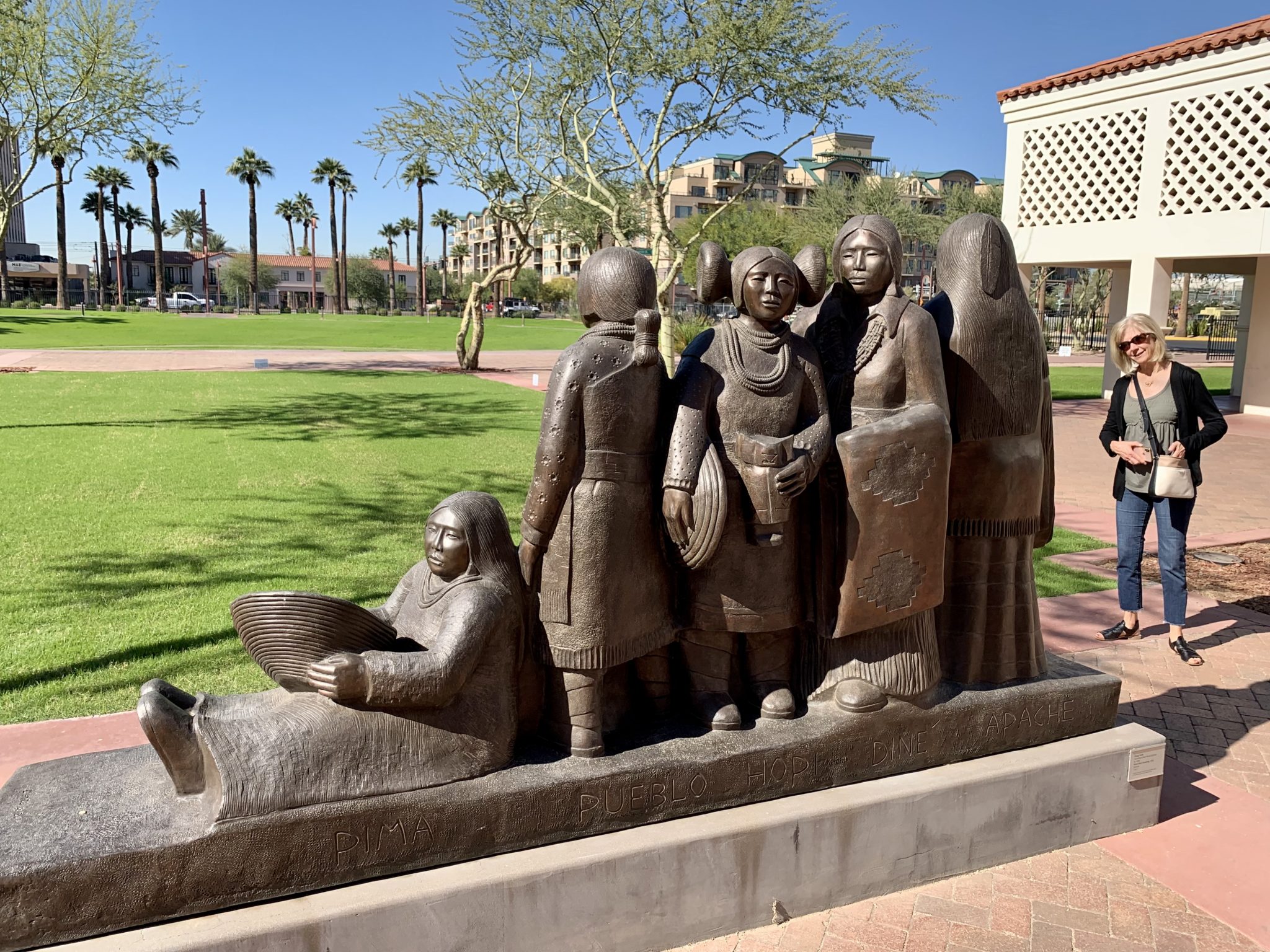
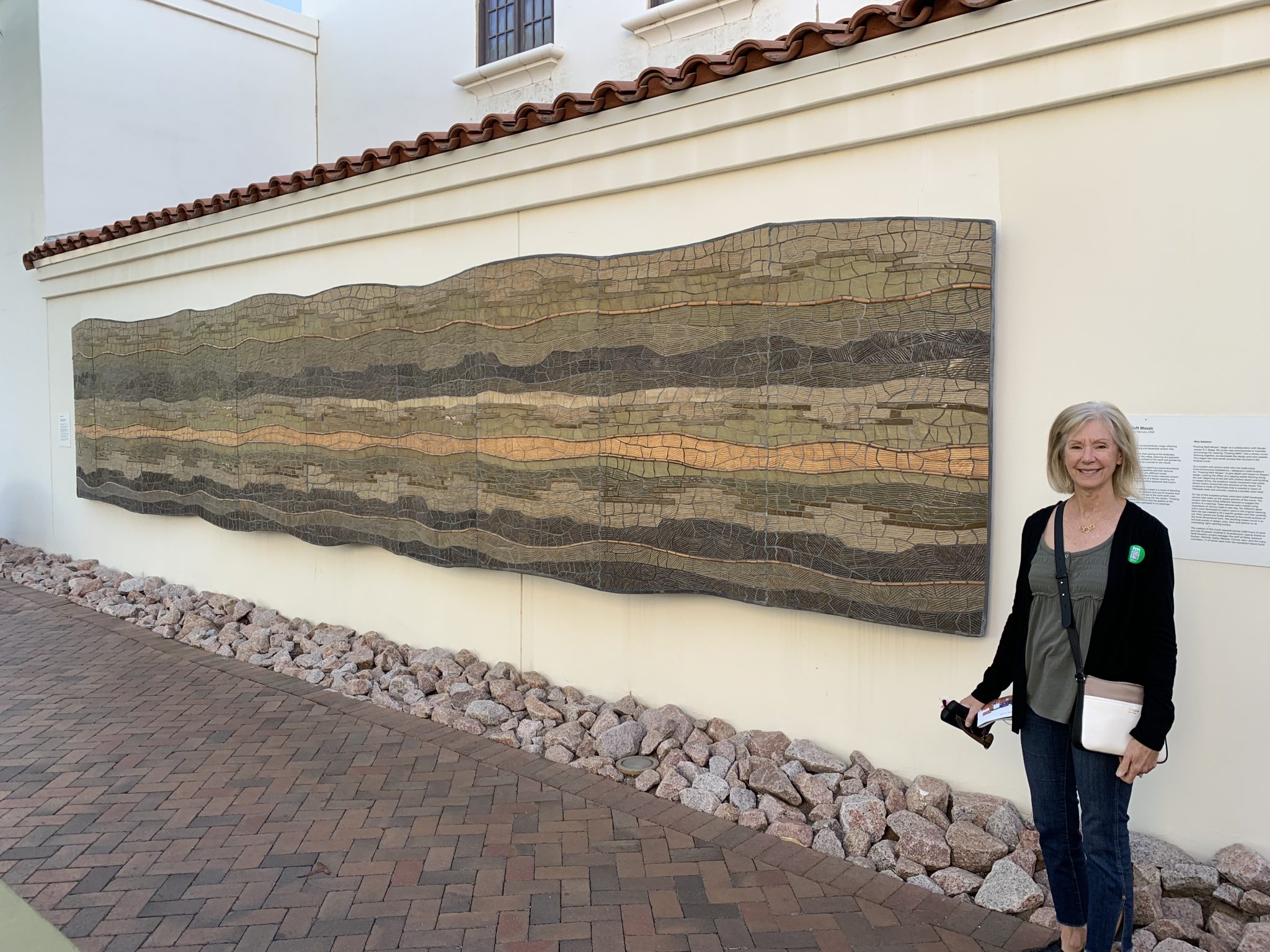
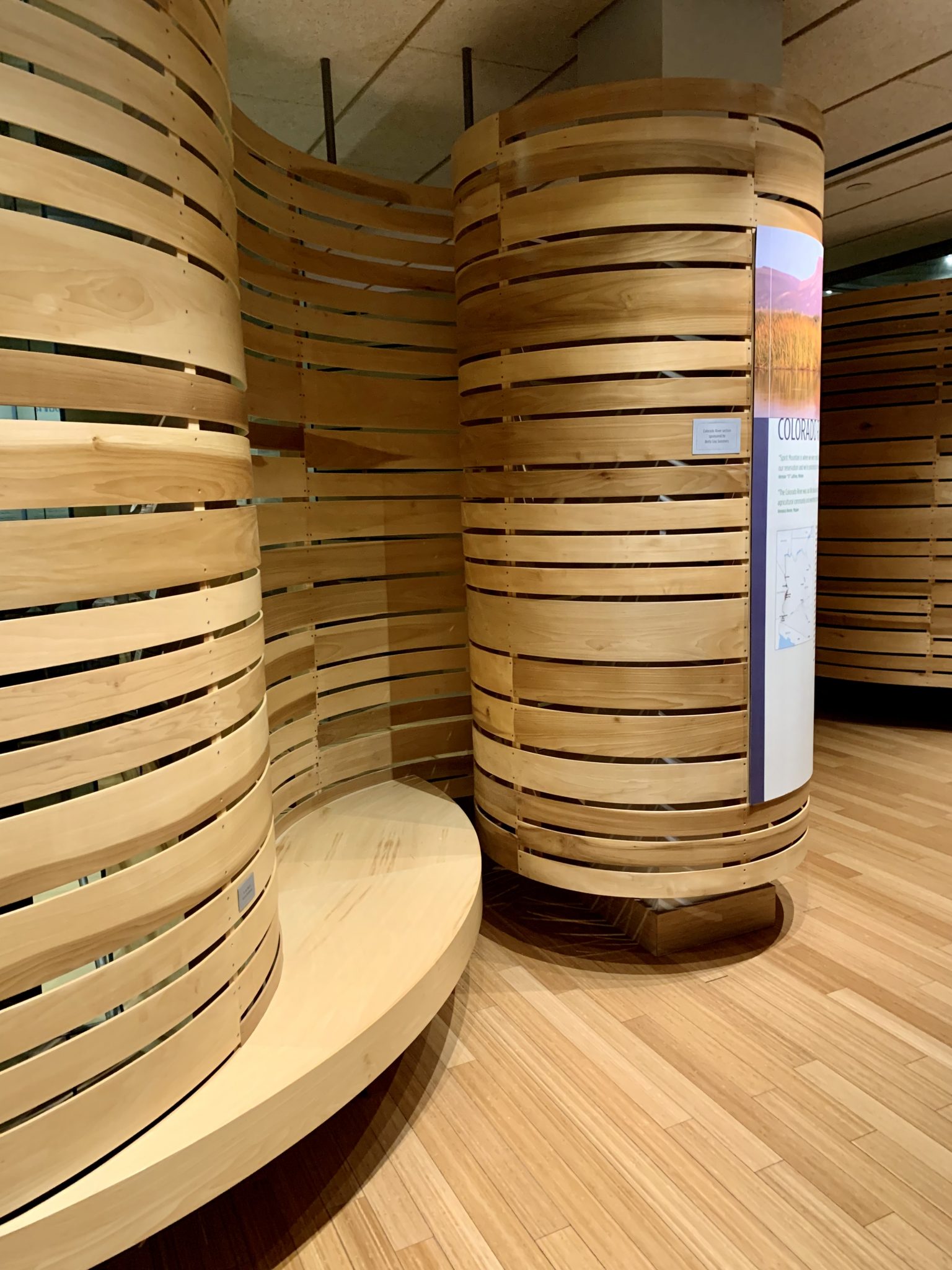

The foyer holds a small selection of works. Behind is a short corridor lined with a modern interpretation of a native fence that leads to the “traditional living” exhibits.
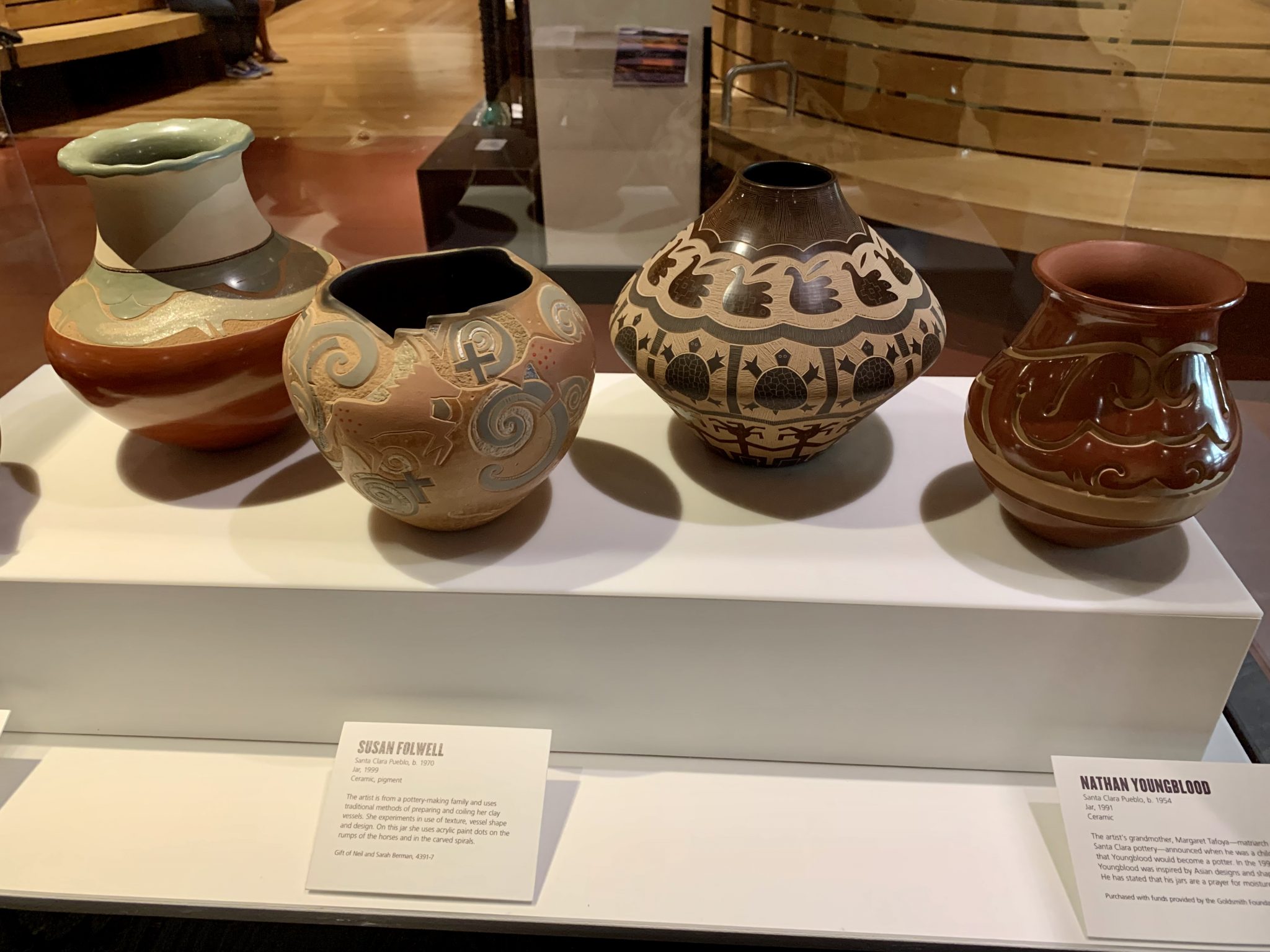
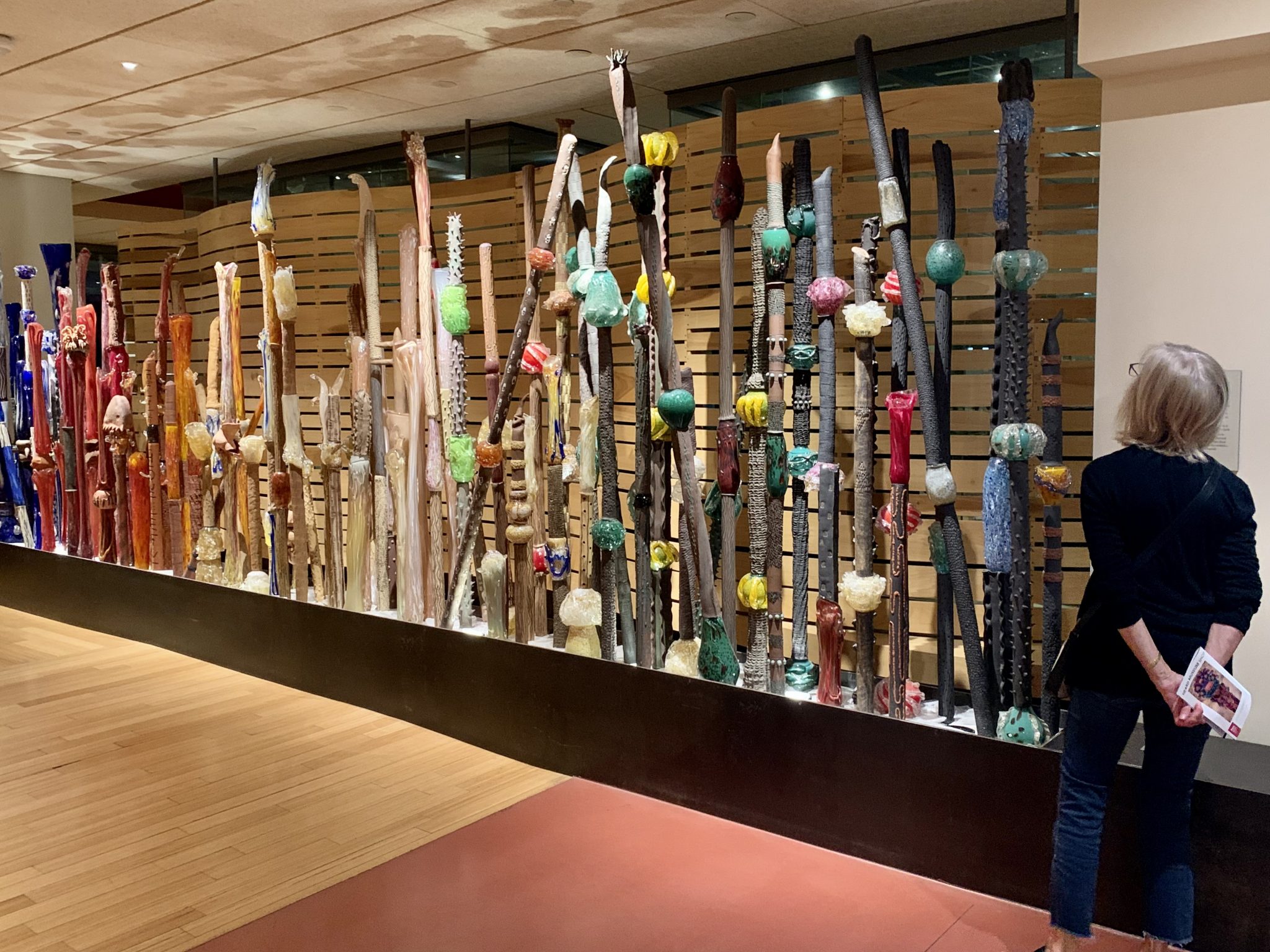
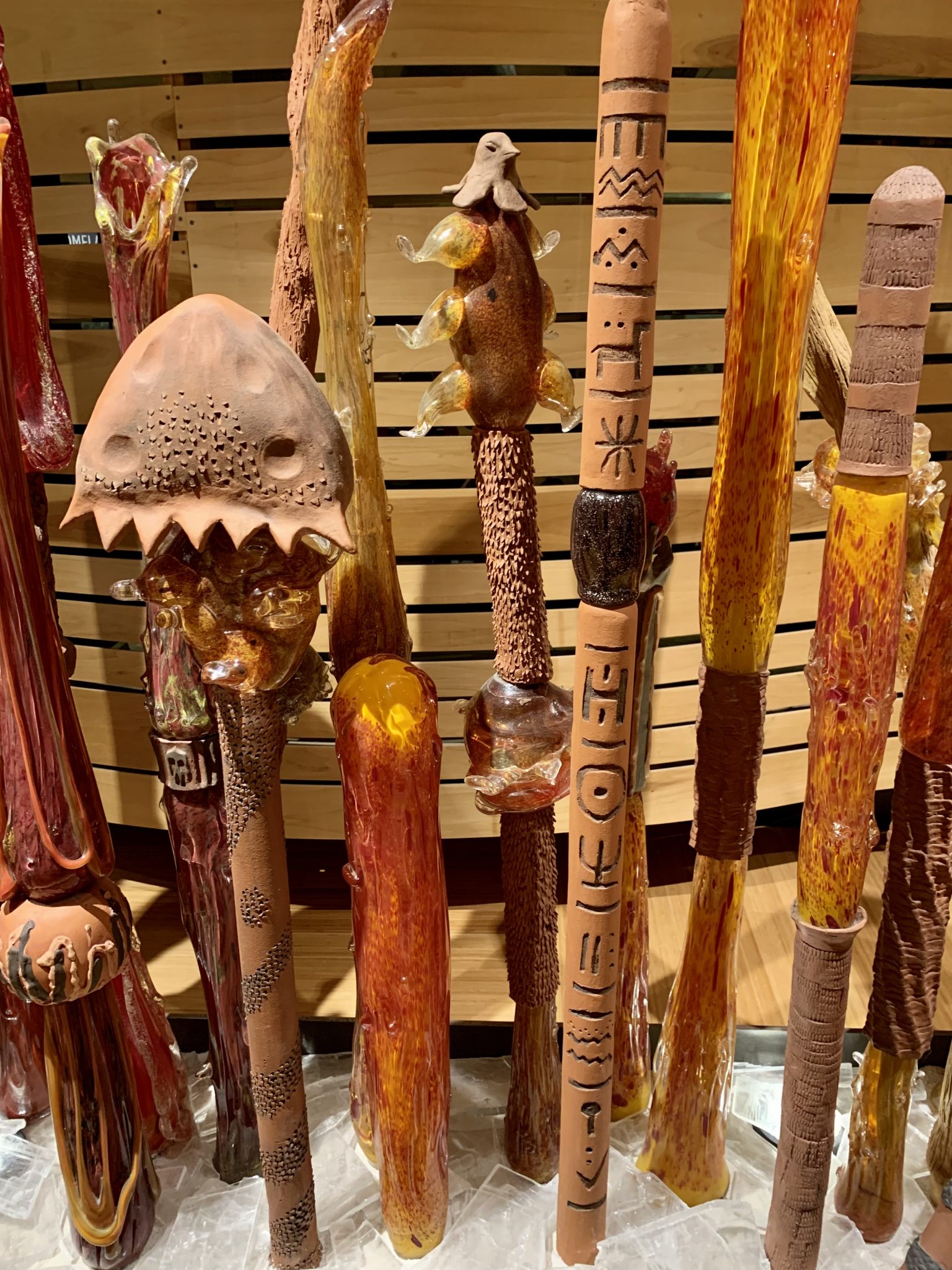
in the next post, we’ll have a look at functional and decorative items from several tribes.